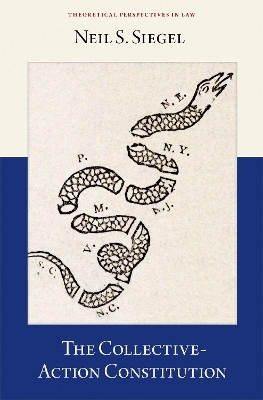
The Collective-Action Constitution
Seiten
2024
Oxford University Press Inc (Verlag)
978-0-19-776096-3 (ISBN)
Oxford University Press Inc (Verlag)
978-0-19-776096-3 (ISBN)
The Collective-Action Constitution discusses how the U.S. Constitution is based on the principles of collective action among states, and how this understanding can provide guidance on addressing the sobering problems facing America today.
The United States Constitution was established primarily because of the widely recognized failures of its predecessor, the Articles of Confederation, to adequately address "collective-action problems" facing the states. These problems included funding the national government, regulating foreign and interstate commerce, and defending the nation from attack. Meeting such challenges required the states to cooperate or coordinate their behavior, but they often struggled to do so both inside and outside the Confederation Congress. By empowering Congress to solve collective-action problems, and by creating a national executive and judiciary to enforce federal law, the Constitution promised a substantially more effective federal government.
An important read for scholars, lawyers, judges, and students alike, Neil Siegel's The Collective-Action Constitution addresses how the U.S. Constitution is, in a fundamental sense, the Collective-Action Constitution. Any faithful account of what the Constitution is for and how it should be interpreted must include the primary structural purpose of empowering the federal government to solve collective-action problems for the states and preventing them from causing such problems. This book offers a thorough examination of the collective-action principles animating the structure of the Constitution and how they should be applied to meet many of the most daunting challenges facing American society today.
The United States Constitution was established primarily because of the widely recognized failures of its predecessor, the Articles of Confederation, to adequately address "collective-action problems" facing the states. These problems included funding the national government, regulating foreign and interstate commerce, and defending the nation from attack. Meeting such challenges required the states to cooperate or coordinate their behavior, but they often struggled to do so both inside and outside the Confederation Congress. By empowering Congress to solve collective-action problems, and by creating a national executive and judiciary to enforce federal law, the Constitution promised a substantially more effective federal government.
An important read for scholars, lawyers, judges, and students alike, Neil Siegel's The Collective-Action Constitution addresses how the U.S. Constitution is, in a fundamental sense, the Collective-Action Constitution. Any faithful account of what the Constitution is for and how it should be interpreted must include the primary structural purpose of empowering the federal government to solve collective-action problems for the states and preventing them from causing such problems. This book offers a thorough examination of the collective-action principles animating the structure of the Constitution and how they should be applied to meet many of the most daunting challenges facing American society today.
Neil S. Siegel is the David W. Ichel Professor of Law and Professor of Political Science at Duke Law School, where he also serves as Associate Dean for Intellectual Life and Director of the Summer Institute on Law and Policy. He has been writing, teaching, speaking, debating, and testifying about the U.S. Constitution, constitutional law, and the federal courts since 2004. A former law clerk to Associate Justice Ruth Bader Ginsburg, he has worked in the United States Senate on the nominations of six current Justices of the Supreme Court of the United States.
Introduction
Part I: Thinking Constitutionally, and Collectively
1. Foundations: McCulloch
2. The New
| Erscheinungsdatum | 03.05.2024 |
|---|---|
| Reihe/Serie | Theoretical Perspectives in Law |
| Verlagsort | New York |
| Sprache | englisch |
| Maße | 152 x 226 mm |
| Gewicht | 839 g |
| Themenwelt | Geschichte ► Teilgebiete der Geschichte ► Militärgeschichte |
| Recht / Steuern ► Allgemeines / Lexika | |
| Recht / Steuern ► EU / Internationales Recht | |
| Recht / Steuern ► Öffentliches Recht ► Verfassungsrecht | |
| Recht / Steuern ► Rechtsgeschichte | |
| ISBN-10 | 0-19-776096-1 / 0197760961 |
| ISBN-13 | 978-0-19-776096-3 / 9780197760963 |
| Zustand | Neuware |
| Haben Sie eine Frage zum Produkt? |
Mehr entdecken
aus dem Bereich
aus dem Bereich
neueste Manipulationstechniken als Waffengattung der NATO
Buch | Softcover (2023)
Westend (Verlag)
24,00 €


